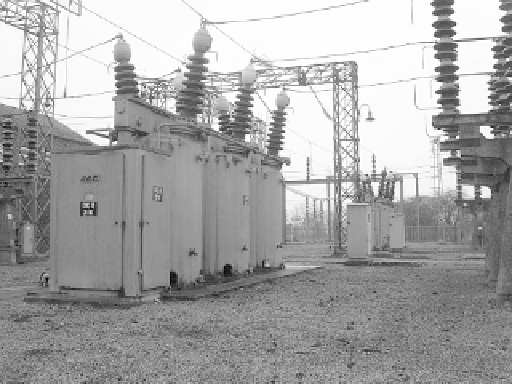Environmental Engineering Reference
In-Depth Information
Figure 5.13
A 132 kV circuit breaker. This large and expensive device serves the transformer shown
earlier in Figure 5.2 . (Courtesy of Murray Thomson)
analysis (perhaps sacrifi cing other features), but in practice the data they require is often
unavailable.
5.7 Faults and Protection
Faults in power systems can be caused by a whole range of events. Lightning strikes, overhead
lines breaking in storms and workmen digging through cables are common examples. Faults
often result in the conductors being effectively shorted together or shorted to ground. In either
case, very large currents can fl ow. The system must be designed to withstand these currents
for short periods and to disconnect the faulted section quickly, so that the rest of the system
continues to operate with a minimum of disturbance. Faults occur quite frequently (very fre-
quently during storms) and must be effectively managed in order to achieve good reliability
for the system as a whole. The detection and management of faults in power systems is known
as
protection
and is a highly developed aspect of power systems engineering.
At low power levels, fuses are used and conveniently provide both fault detection and
breaking of the circuit. At higher power levels,
protection relays
detect faults and trigger
circuit breakers
. Figure 5.13 shows a typical circuit breaker.
5.7.1 Short - circuit Fault Currents
The effective management of faults requires knowledge of what currents will fl ow under all
likely fault conditions. First, this knowledge is required in order to design the fault detection
mechanism, which has to differentiate clearly between normal load currents (including surges
when equipment is fi rst switched on) and fault currents. Second, the magnitude of the possible
fault current must be known in order to select the device that has to break the current.

